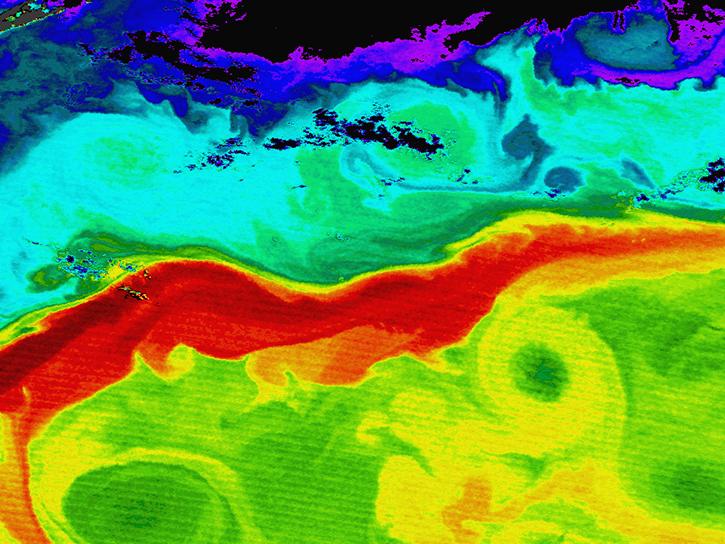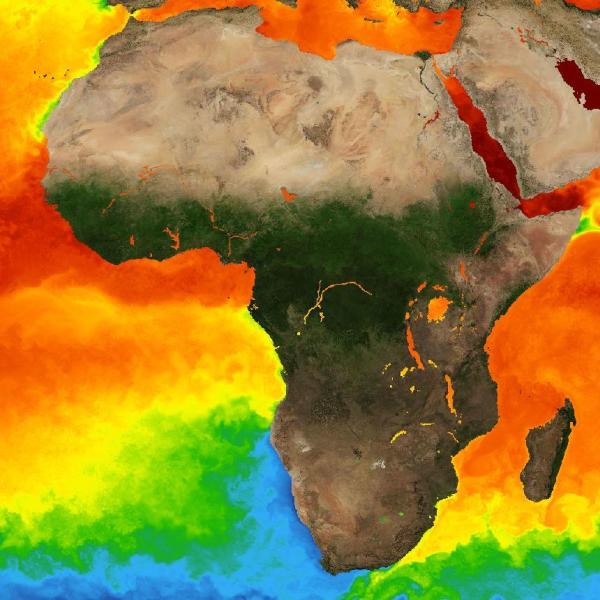Access a range of datasets and data tools to further your ocean circulation research.
Ocean currents are continuous water movements driven by wind, temperature and salinity variations, tides, Earth's rotation, and waves. These forces interact in complex ways, further shaped by seafloor topography, coastlines, and mixing between current systems.
Some currents span entire oceans, forming a global conveyor belt that significantly influences regional climates. The Gulf Stream exemplifies this—it carries warm water from the Gulf of Mexico to northwest Europe, creating much milder temperatures than found elsewhere at those latitudes. Conversely, the California Current keeps Hawaii's climate subtropical rather than tropical.
Understanding ocean circulation is crucial for predicting weather and climate, and for studying how oceans redistribute heat, cycle nutrients essential for marine life, and affect ecosystem health.
NASA monitors ocean circulation using advanced technology including ocean gliders, buoys, and satellites like the Surface Water and Ocean Topography (SWOT) platform. NASA's archives contain diverse ocean circulation data, from wind doppler measurements to carbon calculations.
Learn How to Use Ocean Circulation Data




Join Our Community of NASA Data Users
While NASA data are openly available without restriction, an Earthdata Login is required to download data and to use some tools with full functionality.
Learn About the Benefits of Earthdata LoginFrequently Asked Questions
Earthdata Forum
Our online forum provides a space for users to browse thousands of FAQs about research needs, data, and data applications. You can also submit new questions for our experts to answer.
Submit Questions to Earthdata Forumand View Expert Responses